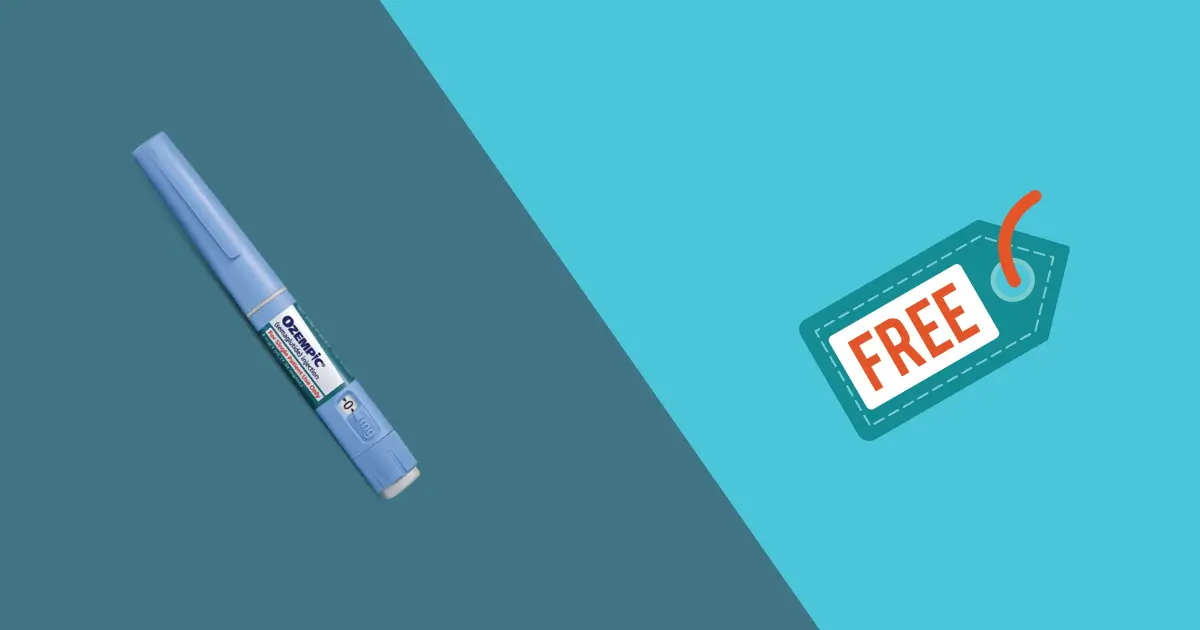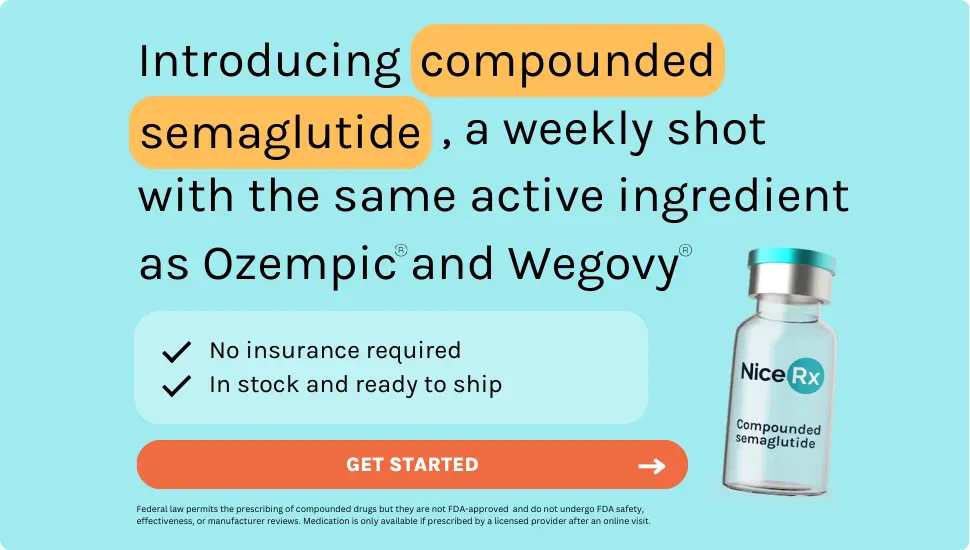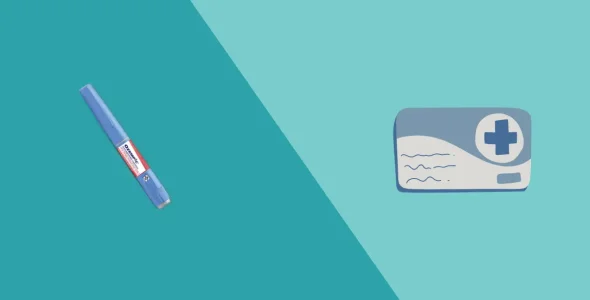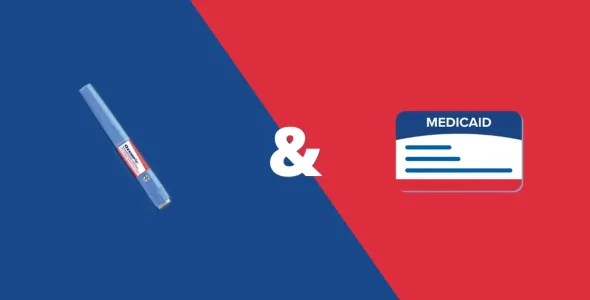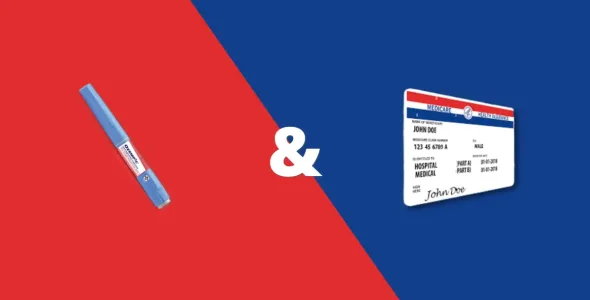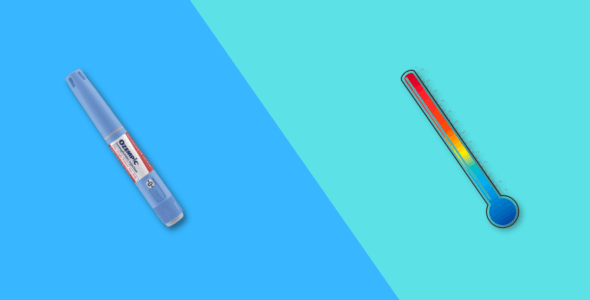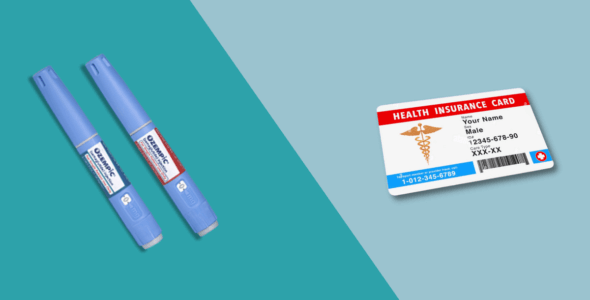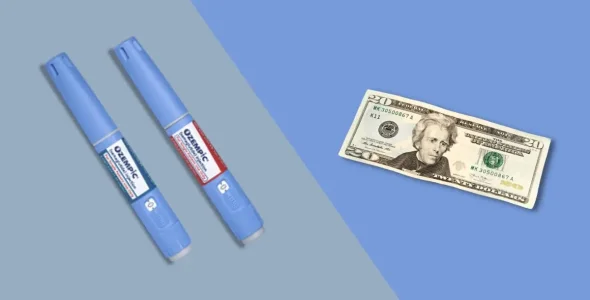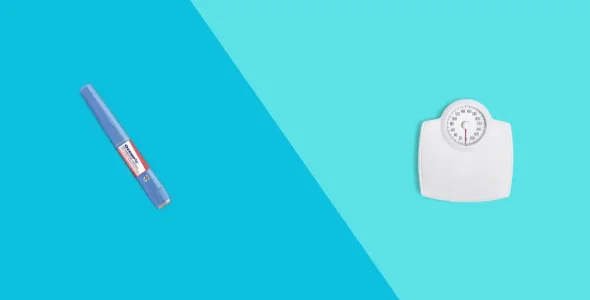How can I get Ozempic for free or for less?
Key highlights
- Ozempic is an expensive GLP-1 medication with a list price of $968.52 per month, according to Novo Nordisk. This is the estimated price for those who pay fully out-of-pocket without insurance or discounts.
- You can get Ozempic for free if your insurance covers and you’ve met the plan’s deductible or out-of-pocket maximum. You may also be able to get Ozempic for free if you meet the eligibility requirements for the Novo Nordisk Patient Assistance Program.
- If you can’t get Ozempic for free, there are other ways to save money on your weight loss medication, including the Ozempic copay savings card and alternative medications.
Ozempic (semaglutide) is an expensive medication for those without prescription insurance coverage.
Wondering how to get Ozempic for free? Keep reading to find out how to get Ozempic for free or at the lowest possible cost.
What is Ozempic?
Ozempic (semaglutide) is an injectable prescription medication that belongs to a class of GLP-1 (glucagon-like peptide-1) receptor agonist drugs. It’s FDA-approved for:
- Improving blood sugar (glucose) levels in adults with type 2 diabetes in combination with diet and exercise.
- Reducing the risk of major cardiovascular events such as heart attack, stroke, or death in adults with type 2 diabetes with known heart disease.
While not approved for weight loss, it’s known to help people lose weight and is commonly prescribed off-label for chronic weight management. Ozempic is also not approved by the FDA (U.S. Food and Drug Administration) for type 1 diabetes.
Ozempic is a prefilled injectable pen available in four doses: 0.25 mg, 0.5 mg, 1 mg and 2mg. It’s administrated subcutaneously (under the skin) once weekly, with or without food. Most healthcare professionals typically start patients on the lower dose and titrate to the higher doses.
How much does Ozempic cost?
According to the manufacturer’s website, the list price of Ozempic without insurance is $968.52 per month. However, the list price is an estimate without insurance coverage and discounts. The price you pay can vary based on several factors.
Without insurance coverage or additional savings, the average cost of Ozempic ranges from $1,000 to $1,200 per month, depending on the pharmacy and location you purchase from. The price can be significantly reduced with insurance coverage or by using the Ozempic copay savings card.
How can I get Ozempic for free?
It’s possible to get Ozempic for free or at a low price.
Prescription insurance coverage
If you have private or commercial insurance that covers Ozempic and you’ve met the deductible or out-of-pocket maximum, your insurance plan may cover 100% of the cost.
Your insurance provider may not cover Ozempic if the medication was prescribed off-label for weight loss. If you’re using Ozempic for weight loss and can’t obtain insurance coverage, ask your insurance provider if they cover other weight loss medications such as Wegovy or Zepbound. Wegovy and Zepbound are FDA-approved for chronic weight management in people with obesity or overweight with a weight-related health condition
Contact your insurance provider for details on the coverage for Ozempic by calling the phone number on the back of your insurance card to find out how much you’ll pay for Ozempic with insurance.
Novo Nordisk Patient Assistance Program (PAP)
You may be able to get Ozempic for free through the Novo Nordisk Patient Assistance Program (PAP) if you meet certain eligibility requirements:
- Your total household income is at or below 400% of the federal poverty level (FPL)
- You have Medicare or no health insurance (you are not eligible if you have any private or commercial insurance coverage)
- You do not qualify for or are not enrolled in any other federal, state, or government program such as Medicaid, Low Income Subsidy (LIS), or Veterans Affairs (VA) Benefits
- You are a U.S. citizen or legal resident of the U.S. or its territories
- You were prescribed the brand-name Ozempic for an FDA-approved health condition by a licensed U.S. healthcare provider.
If you meet all the requirements, you can apply on the Novo Nordisk Patient Assistance Program website.
New enrollments: If approved for the PAP, Novo Nordisk will send an acceptance letter and you’ll be enrolled for 12 months (uninsured patients) or until the end of the calendar year (Medicare patients). New applications are typically processed within 2 business days. The medication will be shipped to the patient’s prescriber’s office within 10-14 business days. Refills will be processed automatically for the duration of enrollment.
Re-enrollments: Uninsured patients will be required to submit a new application 30 days before the end of their enrollment period, and Medicare Part D patients will be able to apply after October 15 of the current year.
Free samples
You can ask your healthcare provider if they can provide you with free samples of Ozempic.
Novo Nordisk provides access to complimentary prescription medication samples to eligible healthcare providers for appropriate patients. However, this is not a sustainable strategy as you’ll typically only be able to receive a maximum of one month’s supply of medication for free.
How can I get Ozempic for less?
If you can’t get Ozempic for free, there are several ways for you to save on the medication.
Ozempic Savings Card
If you have private or commercial insurance and you are not enrolled in any government health insurance (e.g. Medicare, Medicaid, Medigap, DoD, VA, or any other state or federal health insurance program), are a legal resident of the United States or its territories, were prescribed Ozempic for an FDA approved indication (e.g. type 2 diabetes or to reduce the risk of major adverse cardiovascular events), you can pay as little as $25 for a 1-month, 2-month or 3-month supply of Ozempic if you’re eligible for the Ozempic Savings Card.
The savings card offered by Novo Nordisk is valid for up to 24 months with maximum savings of $150 for a 28-day supply, $300 for a 56-day supply, and $450 for an 84-day supply.
You can apply for the Ozempic Savings Card on the Novo Nordisk savings and resources website. If approved, you can use the savings card at participating pharmacies.
Prescription insurance coverage
If your health insurance plan provides coverage for Ozempic, you will most likely pay less than the retail price. To find out if Ozempic is covered, check your insurance plan’s drug formulary (list of covered drugs) or contact your insurance provider to find out how much you will pay for Ozempic with insurance. Most insurance companies require prior authorization before approving coverage.
If you were prescribed Ozempic off-label for weight loss, it’s unlikely that your insurance provider will approve coverage.
Compounded semaglutide
Compounded semaglutide is another option to save on your medication costs. When a medication is in shortage, a compounded pharmacy can prepare the medication using the same active ingredient as Ozempic, semaglutide, at a fraction of the cost, and in a way that is tailored for your individual needs.
NiceRx Weight Loss Program offers compounded semaglutide, including doctor visits, shipping, and medication costs. To find out if you are eligible for treatment, fill out the weight loss quiz and speak with a licensed healthcare professional.
Prescription discount cards
Companies like GoodRx, SingleCare and Optum Perks offer prescription discount cards to people without insurance. You can print or download the coupons from their website and purchase Ozempic at a discount from participating pharmacies. You can also ask your local pharmacy if they have discounts available.
90-day refills
In some cases, buying a 90-day supply at a time can be more cost-effective than buying a 1-month supply at a time. Purchasing a larger quantity of medication can help by potentially lowering drug copays with insurance or reducing shipping costs when buying from mail-order pharmacies. Contact your insurance company as not all of them provide coverage for 90-day refills.
Medicare and Medicaid programs
Many Medicare and Medicaid programs cover Ozempic when prescribed for its FDA-approved use, but won’t cover Ozempic when prescribed off-label for weight loss. Medicaid coverage policies vary by state, so contact your state’s Medicare agency to find out coverage details for Ozempic and what you’ll pay.
Medicare Extra Help is a government subsidy for low-income people with Medicare Part D coverage. It helps lower Part D costs including copays and deductibles for medications like Ozempic. If you qualify for Medicare Extra Help in 2024, you might be able to pay as little as $11.20 for brand-name drugs like Ozempic or 15% of your copay or coinsurance, whichever is less.
Ozempic alternatives
If Ozempic isn’t right for you or if your insurance company doesn’t cover it, there are several Ozempic alternatives for type 2 diabetes and weight loss that you can consider trying. Speak with your healthcare provider to find out if any of these alternatives are right for you.
GLP-1 (glucagon-like-peptide-1) receptor agonists are the most similar to Ozempic. They lower blood sugar levels in people with type 2 diabetes and also help with weight loss. These medications help reduce your appetite and make you feel fuller after eating.
Mounjaro (tirzepatide)
Mounjaro (tirzepatide) is a prescription injectable medication FDA-approved for improving blood sugar (glucose) levels in adults with type 2 diabetes. It’s also known to be effective for weight loss, but it’s not approved for chronic weight management.
Its active ingredient, tirzepatide, is the first approved GLP-1 and GIP (glucose-dependent insulinotropic polypeptide (GIP) receptor agonist). It works similarly to other GLP-1 drugs like Ozempic but is more effective for weight loss. In clinical trials, participants with obesity or overweight lost up to 20.9% of their body weight.
Zepbound (tirzepatide)
Zepbound contains the same active ingredient as Mounjaro, tirzepatide, and is made by the same company, Eli Lilly. It’s a GLP-1/GIP agonist that’s FDA-approved for chronic weight management in adults with obesity (BMI of 30 or more) or overweight (BMI of 27 or more) with at least one weight-related health condition like type 2 diabetes or high blood pressure. It’s used in combination with a reduced-calorie diet and exercise. In clinical trials, participants with obesity or overweight lost up to 20.9% of their body weight.
Trulicity (dulaglutide)
Trulicity (dulaglutide) is a prescription GLP-1 injection that’s approved to lower blood sugar levels and A1C in people over 10 years old with type 2 diabetes. It’s also known to reduce the risk of adverse cardiovascular events such as stroke, heart attack, or death in people with type 2 diabetes and known heart disease. It’s not approved for weight loss. Although, clinical trials found that participants reported a loss of 3% to 5% of their body weight over 52 weeks.
Victoza (dulaglutide)
Victoza (liraglutide) is a GLP-1 agonist injection approved by the FDA (U.S. Food and Drug Administration) to improve blood sugar control in people with type 2 diabetes. It’s meant to be used in combination with a low-calorie diet and regular exercise. Even though it isn’t approved for weight loss, clinical trial data from people with type 2 diabetes show that you can lose around 5 pounds in 1 year with Victoza.
Saxenda (liraglutide)
Saxenda (liraglutide) is a GLP-1 agonist medication that’s FDA-approved for chronic weight management in people with obesity (BMI of 30 or more) or overweight (BMI of 27 or more) with at least one weight-related health condition (e.g. heart disease or type 2 diabetes) in combination with a reduced-calorie diet and exercise. In clinical trials, participants lost 5% to 10% of their body weight in 56 weeks.
Wegovy (semaglutide)
Wegovy (semaglutide) is also a GLP-1 injection that contains the same active ingredient, semaglutide, as Ozempic, and is manufactured by the same company, Novo Nordisk. It’s FDA-approved for chronic weight management in adults with obesity (BMI of 27 or more) or overweight (BMI of 27 or more) with at least one weight-related condition such as heart disease or type 2 diabetes. It’s also approved for adolescents who are 12 and older who are in the 95th percentile for their age and sex. Wegovy should be used in combination with a reduced-calorie diet and increased physical activity. In clinical trials, participants taking Wegovy in combination with diet and exercise lost an average of 14.9% of their body weight at 68 weeks.
Bottom line:
Ozempic is a GLP-1 agonist prescription medication that’s FDA-approved for lowering blood sugar levels and A1C in people with type 2 diabetes and reducing the risk of major cardiovascular events such as stroke, heart attack, or death, in people with type 2 diabetes and known heart disease. It’s also commonly prescribed off-label for weight loss.
Ozempic is an expensive medication without insurance, with an average retail price of about $1,000 per month. There are ways to get Ozempic for free, if eligible, or at a significant discount so you don’t pay the full retail price.
It’s possible to get Ozempic for free or at a significant discount if you have an insurance plan that covers Ozempic, or if you are eligible for the Ozempic Savings Card, Novo Nordisk Patient Assistance Program (PAP), and the Medicare Extra Help Program. You can also save on Ozempic by using prescription drug discount cards offered by companies like GoodRx, SingleCare, and Optum Perks. You can also save money by purchasing compounded semaglutide.
There are GLP-1 and non-GLP-1 alternatives to Ozempic which can also help you save money. Speak with your healthcare professional about Ozempic alternatives to find out if any of them are right for you.

